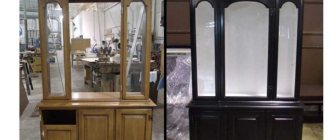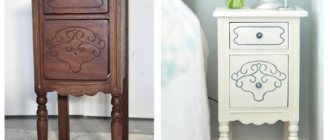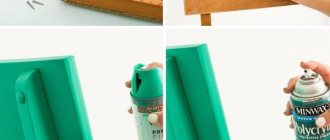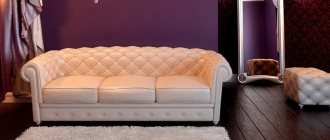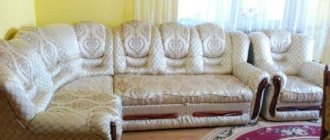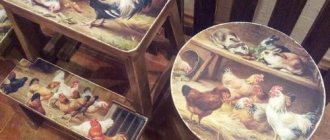The workshop “Restoration of Antique and Vintage Furniture” offers services for the restoration and repair of wood products. Thanks to a special finishing technology, items after our restoration retain the image of noble antiquity and acquire a well-groomed museum look. At the same time, they can be fully used. Officially, the warranty is 3 years. In practice, we have been supporting our work for decades.
We restore: Wooden, carved, stylish and rare items. Tables, secretaries, cabinets, buffets. Upholstered furniture. Sofas, armchairs, chairs. Old Soviet furniture from the 50-60s, 70-80s. Sewing machines, radios, pianos.
Restoration work Old Singer sewing machine Restoration of a wooden machine Restoration of a soft one
Upholstery of a chair Repair of record players Antique furniture Cloth on a desk White spots Inlay Restoration of an old clock case Reconstruction Repair of a table Species of trees Restoration of a table Restoration of a baguette Restoration of a chest of drawers Restoration of chairs Materials for upholstery of upholstered furniture Restoration of old furniture Andre Boulle Repair of veneer Icon cases buy, order, restore seat upholstery
Museum restoration Restoration of lamps Restoration of a piano Restoration of a living room set Antique armchair Repair of furniture locks Making from solid wood Cloth on a table Restoration of a varnish coating Antique Buy an antique clock Restoration of a cabinet Custom veneering Embossing on leather Restorer profession Decoration Restoration of leather furniture Restoration of an old chair Restoration of a secretary Leather on a table Vacancies for a restorer Price for restoring a sideboard Patination of wood Restoration of bone Karelian birch furniture Upholstery
Repair and restoration Stone restoration Furniture restoration in Moscow The smell of old furniture Restoration of upholstered furniture. Padding
Restoration of antiques Repair and restoration of a table Restoration of polishing Polishing Price of antique furniture Restoration of a table top Remodeling of old furniture Gilding of wood Restoration Restoration of an antique cabinet Leather restoration Repair Red chairs Restoration of an old sideboard Colored chairs Veneer Polishing wood Knife handle made of horn Antique chair Paint furniture white
Restoration services Patina on bronze Restoration of antique furniture How to restore? Restoration of an armchair Restoration of figurines Master class restoration Copies Oil for furniture Do-it-yourself restoration Restoration of a grandfather clock Restoration of an antique Restoration of a coffee table Painting a table Gold leaf Restoration of old chairs Repair of chairs Renew chairs Restoration of wooden furniture Varnish Polishing Gluing a vase Paint old furniture
We restore carvings from solid mahogany, walnut, and oak. Veneering and solid wood of Karelian birch, ebony, rose.
Careful, delicate museum restoration practically does not change the appearance, but gives the rarity a worthy, well-groomed appearance.
Antique furniture does not always need expensive restoration; sometimes simple cleaning, maintenance or minor repairs are enough. The workshop also restores varnish, removes scratches, stains, chips, repairs locks, replaces glass and mirrors, and makes keys.
Owners, collectors and novice restorers can use these same contacts to receive free, qualified advice and learn how to restore furniture with your own hands so as not to spoil the item.
The workshop carries out complex restoration work to restore the complex marquetry techniques of Boulle, furniture inlaid with mother-of-pearl, ivory, brass, decorated with gilded bronze, porcelain and metal inserts.
Upholstery of upholstered furniture using springs and natural fillers. Repair of wooden, soft, hard, spring chairs. Chairs for relaxation and work, wicker chairs and rocking chairs. Cabinet, empire, salon, leather, Stalinist sofas.
To evaluate such unique items, the restorer goes to the customer’s home.
Furniture restoration in Moscow
Each Furniture Restoration workshop in Moscow specializes in restoration of a certain type (upholstered or cabinet), class (exclusive or mass production) and professional level (jack of all trades, or a professional with special education and many years of experience). Our specialty is antique, antique and modern luxury wood furniture, as well as furniture from the 50s, 60s, even 70s. We will also carry out minor, simple furniture repairs with fairly high quality.
Gluing of chairs Restoration of furniture Thinning Leather embossing Repair of wooden doors Restoration Restoration of a sofa
Extend the legs of a chair Extend the legs of a chair Repair of a chest of drawers Restoration of an old door Types of mattresses Bolster for a sofa Wallpaper work
Repair Rocking chair, sinking Removing scratches on varnish Scratches, chips, stains on a wooden door Delivery
Renewal Restore Restoration of not old furniture Order non-standard interior doors Restoration of screen
Of course, our craftsmen can repair tables, sideboards, cabinets made of chipboard or MDF, but for these items it is more economical to choose workshops or a private craftsman who specializes in minor repairs at home. It will turn out cheaper and faster. If the furniture requires complex work, or the quality requirements are particularly high, then, of course, it is necessary to contact a specialized, well-established workshop.
Our workshop, where furniture restoration and repair is directly carried out, is located in Moscow. Almost in the center. Convenient free parking. Walking distance from the Rimskaya, Ploshchad Ilyich, Kurskaya, Baumanskaya metro stations and the Serp and Molot railway platform.
Restorers are professionals with years of experience restoring old, antique and antique furniture. Our works decorate private interiors and museum exhibitions, small apartments and luxurious country mansions. True professionals, with equal skill, will fulfill an order for the repair of a small ottoman or bookshelf from the 50s, as well as a luxurious Empire style set of the early 19th century.
Muscovites have always valued comfort and quality things. Therefore, restoration of old furniture in Moscow has always been a popular service. In the 19th century, polishers, almost every year, came to the houses of wealthy citizens and used polish to renew the varnish on wood, wax furniture, adjust dresser drawer guides, clean and polish brass handles and hinges. In other words, they carried out minor repairs and routine maintenance. Nowadays such actions are called restoration at home.
The furniture gradually became first old, out of fashion, and then antique. The more time passes between the manufacture of an item and its restoration, the more complex the process. A hundred years ago, restoration of antique furniture in Moscow was carried out at home, using home remedies. The same craftsmen who made the furniture restored it. Nowadays everything has changed. Nowadays furniture is made in large quantities. Carpenters have become machine operators, CNC operators, laser cutting and milling operators. Polishers became painters, and furniture makers became assemblers. Therefore, there are fewer and fewer specialists who can work with natural wood and old materials using ancient technologies. Finding a real, talented cabinetmaker is a great success.
Restoration of old furniture interior
If the owner of old furniture has no desire to restore it using conventional methods, then there is an opportunity to make a masterpiece out of it. Today, professionals use various techniques with which they can do something extraordinary, unlike conventional painting or varnishing.
Painting with paints
Many people have wondered how to restore an old table with their own hands. To do this, you can simply color it. Painting furniture is rightfully considered the best and cheapest way to restore furniture. First you need to apply a plain base on which you can decorate. You can decorate a chair or table, for example, with flowers. The main thing is that the drawing matches the style of the room. Patterns can be found on the Internet. Such furniture is great as decoration, for example, in a buffet.
https://youtube.com/watch?v=OGe3BJRiZnY
Ornament in decoupage style
You can do this kind of decoration with children. It is simple at its core. You can cut various patterns from fabric and paper. After this, all the details, as well as the decoration object as a whole, are varnished. You can also make decoupage with your own hands at home, for example, by wearing a regular fabric cover.
Craquelure coating
Perfect for restoring an old cabinet. Two technologies are used here: varnishing and decoupage. Using this method, you can give the furniture an antique look. First you need to apply a regular layer of varnish, and while it is still wet, apply craquelure, which will form an imitation of cracks, like in antique furniture.
Veneer finishing
Veneer looks like small and thin pieces of wood of different species and colors. Decorative elements for furniture restoration are cut from sheets of such veneer. They are glued to the surface using PVA glue. You need to prime it in advance. The combination of several techniques together looks very cool.
As you can see, old furniture, which remains durable but has aged a little, lends itself perfectly to restoration using various methods and techniques. It can not only be repaired, but also given a completely new look.
Originally posted 2018-03-03 06:27:11.
Antique furniture in Moscow
Photos of antique furniture after restoration Travel chest Embroidery in a mahogany frame Mirrors Plywood seat Grandmother's table Restoration of mahogany furniture Restoration of cabinet furniture Wooden furniture
Wall color in the interior Desk Hanger Repair of wicker furniture Chair with rattan repair Chair with a carved wooden back Dressing table 19th century Restoration of your own furniture Furniture for flowers
Chess table Secretary Casket Sets Viennese chairs Table with mother of pearl Soviet furniture Repair of chair legs 19th century armchair Antiques
Counter in Boule technique Console Chest of drawers Historical interiors Wooden Viennese chairs Style of chairs Restoration of furniture from Soviet times Buy a piano price About antique chairs Antique, historical interior
How to purchase antique furniture in Moscow. There are several sites. The most famous and affordable are AVITO, MESHOK, EBay, FROM HANDS, FROM FIRST HAND and so on. Owners put up unwanted items for sale on these sites. At first glance, there is nothing interesting there. And yet. I can tell you from my own experience. If you browse these boards daily and spend a month or two on it, you can buy almost everything first-hand at affordable prices.
Most often, sellers of antique furniture at an affordable price are people moving, making renovations, or changing the interior. Heirs who are selling an apartment, a dacha, an old country house, that is, those who do not need old things or are even in the way, try to get rid of them quickly and therefore give them away cheaply. Therefore, you can sometimes purchase unique items at first hand quite inexpensively.
Hundreds of antique dealers and passionate collectors daily, with the zeal of miners panning for gold-bearing sand, hourly view new, fresh advertisements for the sale of antiques first-hand.
Second hands are dealer-assemblers. They, as a rule, quickly buy at the lowest prices first-hand everything that may be of interest, and immediately, adding their little “interest”, display the same items on the same boards.
At the best prices, antique furniture in Moscow is purchased from such dealers. Firstly, not every collector has the opportunity to scour the Internet for days on end. Secondly, dealers are literate people, their prices are aligned with the market. Thirdly, every honest seller values a regular customer. He will neither inflate the price nor outright deceive.
You can find and buy almost any antique furniture in Moscow at an affordable price. From an empire style secretary to a rural stool.
Of course, old antique furniture in good restored condition is sold in numerous showrooms, galleries, and shops. There you can look at an item in a pleasant atmosphere conducive to expensive purchases, talk with a consultant about art, and drink a cup of good coffee. The prices will not be the same as first-hand, but the purchasing process will certainly be more pleasant.
Tip:
The golden rule for furniture collectors. Before you buy, consult with a restorer about the cost of restoring your favorite chair, sofa, sofa, bureau or jardiniere.
Fill out the form, attach one or two general photos and receive comprehensive information about the item.
Restoration methods
Familiarization with modern methods of repairing it, as well as the appearance obtained after treatment, will help determine the optimal option for restoring the table. You can cover the products like this:
- Using regular brushes (to create a perfectly smooth surface or create a smooth transition from one color to another by mixing paints directly on the countertop with a small brush).
- Through meshes, tulle, stencils (to obtain patterns and stylized spots on the surface).
- Craquelure compositions (allows for antique stylization, giving the surface the appearance of cracked paint).
You can also cover tables with different types of films and paste them with paper materials. All of the options discussed are more applicable to wooden furniture, but some of them are also suitable for restoring plastic products.
Restoration workshop
Our restoration workshop carries out the following types of work:
1. Elimination of small chips, scratches, stains from tables, countertops, shelves. Replacement of fabric on chairs, simple armchairs, sofas. This is a cosmetic repair, which can rather be called furniture care. The price category for this type of service is from 5 to 20 thousand rubles. Such repairs can be performed by almost any furniture restoration workshop, not necessarily antique ones.
2. Restoration of varnish coating with a large degree of damage. Restoration of veneer, carving, glass, mirrors, repair of locks, making keys. Each of these operations is not expensive, but if they are all found in one item, for example, in a secretary, a sideboard or a desk, the prices add up, for a sideboard it reaches 100 thousand rubles. Restoration workshops in Moscow try to provide comprehensive services. So that the customer does not have to polish the top of the chest of drawers in one organization, and order keys to ancient locks from another.
3. Major, or as it is usually called, complete restoration. A specialized furniture workshop is needed here. The item has significant value and is completely destroyed. The structure is unstable. The exhibit is wobbly, or even the legs are separate from the body. Or even completely disassembled. The veneer is partially lost. Drawers are falling out, doors are warped, the color and texture of the unique wood is hidden under layers of age-old patina. It is in this condition that the most valuable, old and expensive exhibits come into restoration. Here the price is calculated based on the time required for the restorer to completely restore antique furniture while preserving its historical authenticity and restoring functionality. The amounts can amount to hundreds of thousands of rubles, and the restoration itself stretches over months and years.
In other words, Moscow offers a wide range of services to suit any requirements and budget.
Each furniture workshop readily takes on any order, no matter how complex it may be, regardless of the availability of specialists and its capabilities.
The prices are almost the same for everyone. Only the result is different. We often have to correct the consequences of barbaric restoration. The most typical of them:
1. Coating with modern varnishes and paints that “kill” the natural beauty of expensive wood.
2. The use of synthetic dyes when tinting wood, giving the product an unnatural color.
3. Use of metal fasteners on wooden structures.
4. Sawing off the legs to level a chair, armchair, table.
5. Sanding the veneer down to the base.
6. Replacing spring seats with sea grass with foam ones.
7. Removing damaged decor.
8. Use of casting instead of thread.
9. Installing the middle parts of the backs of the chairs “upside down”….
We correct the mistakes of old, inept restorations so that the owner can be proud of his furniture and enjoy using it.
Assessment and examination How to restore furniture? Waxing Varnish Renewal Preserving the texture Restoration of solid wood Restoration of wooden chairs
Shellac Where to buy cloth? How to restore furniture in Moscow? How to glue cloth on a table? Restoration materials Veneer restoration Glue a ruler Do-it-yourself restoration Antiques appraiser. Where to evaluate antiques? Do-it-yourself alteration
Veneering White coating How to remove traces of adhesive tape on furniture? Furniture bug Removing old varnish Gluing wood Furniture care Restoration guarantees Waxing
Cracked Paint over scratches on furniture Mahogany Matte and glossy varnish Oil varnish Do-it-yourself table restoration Restoration of old wooden furniture Furniture painting courses Paint a table in the color of the chairs Online restoration
To fully use antique furniture after restoration means to carefully, carefully, with all the respect of its previous owners, the old masters who made it, and the work of the restorers who restored it.
There is a cat on staff.
The restoration workshop is located in Moscow, Kurskaya metro station. Furniture restoration takes place in an equipped room with convenient free parking. This allows the customer to visit the workshop at any time. Watch the restoration work take place. Carry out operational control and express your wishes. As a rule, customers trust us, but there is always the opportunity to be aware of the work being done.
Small defects and partial restoration - ways to eliminate them
A simple, fragmented restoration, including fighting stains, replacing coatings, strengthening joints, can be handled by anyone, even without professional skills. The process consists of certain stages, some of which can be omitted, depending on the type of defect:
- Visual inspection – assessment of the condition of the damaged area, determination of the plan and scope of work.
- Disassembly – necessary for large items; it involves removing drawers, shelves, and handles.
- Cleaning – removing dust, wet cleaning, degreasing the surface.
- Minor repairs - refinishing, repairing cracks, chips, working with breakages.
- Decoration – gluing veneer, applying patterns, painting, painting.
Stains and dirt
Any stain spoils the appearance of furniture products. Under the influence of substances that have turned into pollution, the surface of a particular object deteriorates. Therefore, it is very important to clean things from plaque, stains, and blots in a timely manner. But even experienced housewives cannot boast of knowing how to deal with a dirty place. Let's consider the possible options:
For all surfaces:
- Cleaners. Before restoring an element, it is necessary to check the effect of the selected cleaner on the coating in an inconspicuous area. If a trace remains, you will have to choose another method.
- Table vinegar. Used to remove strong, long-standing stains.
- Sauerkraut brine. It has a similar effect to the previous substance.
Natural wood:
- Baby soap. The raw materials are crushed, diluted in heated water, and applied to the dirt using soft textiles.
- A mixture of lemon essential oil and water at the rate of a teaspoon per glass.
- Lemon juice. The squeezed fruit is mixed half and half with water. Used to remove stains.
- Ammonia and water at a ratio of 1:6. Used for most types of stains.
Polished furniture:
- Raw potatoes. Used to remove iodine drops from wooden surfaces, as well as fingerprints from lacquered furniture.
- Laundry soap. It will help restore the coating after streaks from spilled liquids.
- A mixture of table vinegar and olive oil.
- Vegetable oil. Used for difficult stains.
- Baby powder for grease removal.
- Wax dissolved in boiling beer.
It is prohibited to use acetone or alcohol to clean polished surfaces. Upon contact with these substances, the top layer may become pale and cloudy.
Cushioned furniture:
- Gasoline is used to remove grease stains.
- Methyl alcohol is used when necessary to remove traces of chewing gum.
- A solution of ammonia and acetic acid is applied to the dirt formed from vegetables and fruits.
- Laundry soap to remove coffee and chocolate stains.
- Table salt helps against red wine, ice against white wine.
- Saline solution for all types of contaminants.
Removing scratches
Scratches often appear on a smooth surface, which spoil the façade of the furniture set. Therefore they need to be eliminated. There are several ways to solve the problem. Let's look at the most common ones:
Special means:
- Pencil. Helps paint over damaged surfaces
- Hatch. It is poured into potholes and paints them over.
- Wax for wood. Divided into soft and hard. It is used for cosmetic purposes and for the restoration of chips.
- Stain. It will help remove any abrasions.
Traditional methods:
- Walnut kernel. When rubbed on the surface, the cracks are filled with grains of raw materials and become invisible.
- Mayonnaise. Used for natural wood. It is poured into the groove, after a few days the area is sanded.
- Flax oil. Mix with alcohol and apply to scratches.
- Tea leaves and iodine. Used only for painting and masking.
- A solution of table vinegar with vegetable oil.
- Mastic. A mixed solution of wax, turpentine and alcohol at a ratio of 4:3:1 is applied to the damaged area.
Chipped wood surface
Getting rid of a chip is a more difficult task than eliminating a regular scratch; there are fewer materials to solve this problem. But anyone can cope with it at home. The work can be done using the following materials:
- Visual camouflage. Stopgap measure. In the absence of funds to purchase the necessary coatings, the damage is simply painted over using improvised means, for example, iodine or tea leaves.
- Decorative corners, protective profile, corners. In some cases, you can simply close the defective area using special elements, which are often sold in specialized stores.
- Putty for furniture. Not suitable for frequently used items, be it a table top or a pull-out element, except for expensive polyester options.
- Hard furniture wax. The substance melted with a soldering iron or lighter is applied to the damaged area in excess. Afterwards the surface is leveled, sanded and varnished.
- Furniture edge. There are many types from paper to plastic. It allows you to replace the old coating without traces of repair.
Damage to paintwork
It is quite difficult to eliminate defects in paintwork at home. First you need to determine the type of varnish with which the product is coated. To identify this, you should do the following:
- Apply a drop of 10% alkaline solution to an inconspicuous area. If after a few minutes the substance dissolves, then an alcohol-based varnish is applied to the surface.
- To determine nitro varnish, acetone is used.
- If the top layer does not dissolve under the action of a solvent, then the product is coated with a polyester, alkyd substance.
After determining the type of coating used, a substance corresponding in composition and color is purchased. Areas that do not require restoration work are covered with paper or Vaseline. Old material is removed using solvent or sandpaper. Then new raw materials are applied in several layers.
Veneering/veneering
By covering the surface of a product with veneer, you can significantly transform old furniture and give it the appearance of expensive wood. A large selection of colors and natural patterns will allow you to turn a tattered item into an integral part of the interior, matching any style. There are several veneering methods:
- Hot. The veneer is glued to the object using an adhesive solution.
- Cold. The material is pressed onto the base using special equipment.
- Membrane. An industrial method for vacuum bonding materials with complex surfaces.
At home, only the first option is used. The process looks like this:
- Preparing the base. Includes removing fittings, removing the old layer of cladding, eliminating possible defects, leveling the surface with putty to a perfectly smooth state, and sanding with sandpaper.
- Veneer preparation. The roll is unwound, the material is moistened with a damp sponge, covered with cloth or wrapping paper, and laid between two flat sheets of plywood or fiberboard boards. Once dry it becomes straight.
- Veneering. On the one hand, a thin layer of glue is applied to the object and the veneer; usually the manufacturer indicates the required brand, but PVA-based glue is suitable. After the first layer has dried, apply the second. The sheet is applied to the product using an iron heated to 50 °C and smoothed through the paper. Then it is leveled with a wooden block. Each subsequent part is overlapped by 3-4 cm.
Decoupage
A very simple and interesting method of restoring furniture, which even children will be interested in doing. Drawings and ornaments cut out of fabric and paper are pasted onto the products and covered with varnish. There are several types of decoupage:
- Standard. Pictures are glued to the front side of the item and varnished.
- Reverse. Suitable only for glass surfaces, for example, a coffee table. The image is pasted under the glass.
- Volumetric. Individual elements are highlighted in the overall picture. To do this, some identical fragments are glued in several layers.
- Artistic. A single image is created on the entire plane, simulating a real painting. At the same time, no boundaries are visible between the background of the object and the picture.
- Decopatch. Using paper and napkins, torn into pieces, the entire front side of the product is filled.
Craquelure
Many people use the crackle technique to restore furniture. After the paint dries, it cracks, giving the furniture an antique effect. To get cracks, special varnishes are used, which are divided by type of composition: one-step and two-step. This division is conditional; for each subtype the number of stages is greater.
- Single-phase craquelure. The coating has the appearance of cracked paint, with the base layer or wood visible underneath the cracks. The effect is achieved due to the different drying speeds of the first and second layers. However, a base paint is not always used; sometimes only a paint coating is sufficient. Craquelure varnish is applied to the surface and not completely dried for half an hour. Afterwards the finishing layer of acrylic paint is applied using a brush or roller. The size of the cracks will depend on the thickness of the composition.
- Two-phase. It is not the paint that is cracking here, but the varnish applied over the finished image. This technique gives the maximum resemblance to antiquity. It consists of the following: the first base layer of varnish is applied to the prepared base, which is dried until “tack-free”. Then everything is covered with a second layer, after it dries, the cracks are rubbed with powder and pigments. The workpiece is washed under running water and completely dried. At the final stage it is covered with a layer of varnish.
Furniture patina
Plaque on a wooden base indicates its damage by microorganisms, but on oak surfaces it is a sign of antiquity. It is very difficult to obtain patina naturally, so modern ideas are used - the artificial patina method. The construction market offers several types of compositions: thick paste, liquid, beveled varnish. Regardless of the substance used, the technology is almost the same, it is as follows:
- Preparing the base. It is rubbed with a metal brush and degreased.
- Padding. After drying, it is rubbed with sandpaper.
- Varnishing. The composition must dry completely.
- Application of a patating composition. Do not dry until completely dry; excess is removed with a sponge.
- The product is covered with a second layer of patina and left to dry.
- To fix the result, a transparent varnish is used.
Varnishing and polishing
Varnishing is a fairly popular type of cladding for furniture. Transparent coatings protect the surface of the product from moisture and dirt, giving it shine and contrast. For these purposes, oil, alcohol, and nitro varnishes are used. A new finish may be needed if scratches appear or the coating loses its original appearance. To do this, the old layer is completely removed, the base is sanded, primed, and varnish is applied.
The final stage of work will be finishing with polishing paste. For repainting, you can use furniture paint, but many people prefer automotive paint. The work consists of rubbing a special composition using felt over a varnished surface. To speed up the process, you can use a grinder. After these steps, the furniture has a mirrored, shiny finish.
Inlay
One of the oldest techniques for decorating furniture, known since Ancient Egypt. The application of a shaped image by wood on wood is called intarsia. It is quite difficult to make this type of mosaic at home. The wooden plates that make up the overall picture are tightly fitted to each other and glued together. The front side is smoothed, varnished, and polished.
Due to the fact that inlay is a free technique, block mosaic can be diluted with glass, stone, and plastic elements. The work uses complex parts that crash into each other. The texture of individual components may vary. The surface is painted in different colors using stains, varnishes, and dyes.
Workshop of Elena Zhilina
Furniture restoration workshop of Elena Zhilina Course program Wood painting Principles of restoration Furniture decorating courses
Workshop by Elena Zhilina Wood species Restoration training Books on restoration
Restoration workshop of Elena Zhilina Restoration training programs Restoration training What is the secret of old furniture? Antiquarian antiquarian
School of Restoration Course program Decoration Antiquarian courses English chairs
For the first time, Elena Zhilina’s workshop was seriously told to the general public in 1996 in the newspaper Antiquarian Vedomosti. The article was devoted to the course of lectures by Elena Zhilina “Fundamentals of Scientific Restoration”, which were then held at the Institute of Knowledge of the Faculty of Expertise of Antiques. Now there is no such newspaper anymore. The institute has long since grown and renamed itself into a reputable educational center. But then, in the 90s, it was practically the first educational institution where one could obtain more or less reliable knowledge about antiques and the market for antique items of decorative and applied art. By that time, Elena Zhilina’s restoration work was already 4 years old.
Further in the collection “WHO IS WHO” in 2013, the workshop at that time was already 21 years old. There were publications in industry magazines “Furniture” and “Forest Industry”. A number of articles by Elena Zhilina herself about the types of wood used in the manufacture of furniture in various historical periods have been published in the Antikvariat magazine. In the October 2008 issue, the glossy magazine Seasons also published a rather respectful article about the workshop.
At different times, stories about the Moscow restoration workshop were filmed and shown on different television channels.
Real recognition came after participating in specialized exhibitions (2006 to present). Elena Zhilina was a delegate to the First (2013) and Second (2018) International Congresses of Restorers, and published the first book “Restoration. Carpenter's Dictionary", 2021. Member of the International Union of Designers since 2006, Consultant of the Department of Furniture Restoration at Moscow Art University named after. S.G. Stroganova, organizer and permanent director of the restoration workshop of Elena Zhilina.
Since 2006, the workshop regularly participates in exhibitions, and since 2009 it has been a permanent participant in the Russian Antique Salon exhibition on Krymsky Val.
Restoration workshop of Elena Zhilina
It all started with an art school, and then a Forestry Institute. The school provided primary art education, and the institute provided higher engineering education in the field of making furniture from wood.
In 1992, she completed courses for tempera painting restorers at the Special Research Institute. Build. Restoration. May 1992 is considered the date when Elena Zhilina began her restoration work. The work on restoring the icons for private collectors and antique salons lasted two years. Then Elena Zhilina was invited to co-found a furniture restoration workshop.
In the mid-90s the workshop disbanded. Elena becomes the head of the antiques department at the Kravchenko Building 8 pawnshop. Training again. Now on courses for jewelry and precious stones appraisers at the League of Pawnshops. The work brought new knowledge about metals and jewelry stones.
Working in a pawnshop as an antiques appraiser and part-time director of a jewelry and antique store was interesting, but not independent.
Working with precious metals is too much trouble. Therefore, all attention was focused on studying methods for restoring non-precious metals, but no less noble than nickel silver, spiater, cupronickel. When it became clear that the management of the pawnshop was not going to open a restoration workshop, Elena decided to do it herself.
Thus a new workshop was opened, now multidisciplinary, enriched with reliable scientific knowledge in various fields of Decorative and Applied Arts.
Carpenter required
Ancient Egyptian furniture
Renaissance furniture
Rococo style furniture
Art Nouveau interiors
Gothic furniture style Upholstered furniture
Chippendale
Furniture of ancient Rome
Russian furniture
Baroque style furniture Furniture restorer Restoration
Biography of Thomas Chippendale Antique
Furniture restorer in Moscow
Modern stylish furniture
Late classicism style furniture - “AMPIRE”
Western European furniture of the 19th-20th centuries Eclectic furniture A short course of lectures furniture styles
Repair and restoration
Roman style
Classicism style furniture
Furniture of Ancient Greece Furniture Museum History of Furniture
Finishing touch
Old table decor using decoupage technique
The final stage of restoring a wooden table is decoration. You can take up the brush again and, using various stencils or masking tape, apply an applique to the surface of the table.
Painting a table through tulle should be done on top of the base layer, with a pigment of a contrasting color
For those who can draw well, an image of their own masterpiece on furniture is suitable, which will remain for many years.
A table with artistic painting will perfectly complement the interior in an ethnic or rustic style
A pattern on the tabletop can also be created using mosaics or gold leaf. The latter is used in work when the goal is to imitate one of the noble metals - gold, silver or bronze.
We create a picture from small fragments on the surface of the table
Potal (gilding) - a wonderful decoration for a table in a classic style
Antique restoration
Antique restoration in Moscow is not a very large circle of high-level specialists, who almost all know each other. Watchmakers, “metalworkers”, restorers of chandeliers and porcelain, fabrics... Everyone once studied together somewhere, worked, participated in exhibitions, met at advanced training courses. Someone now works in a museum, making private orders in their free time from their main job. Some people have their own workshop, a small enterprise, so to speak. Some are already retired and work from home.
Some restorers as a whole department left government work, opened their own workshop, organized Restavraciya LLC, and ordered an official website from professionals. They work successfully in the field of preserving cultural values.
There is a group of workshops formed on the basis of non-core industries. Furniture transportation, trade, apartment renovation, design. I even heard about some former musician and journalist who is now engaged in restoration.
How our workshop appeared is described above. We have been working for a long time, so we have a lot of experience.
Professional collectors turn to us when they need to find a way to eliminate rare damage, the optimal technology for making a copy, or reconstruct a lost part.
For example, professional antique car restorers commission us to restore wood-trimmed parts. Painters bring frames, hatmakers bring hat boxes, jewelers bring cases for jewelry and silverware.
The site is dedicated to antique furniture and everything connected with it. Addressed to owners and collectors of antiques. Be it furniture, a box, an icon or a car. Articles on the site provide information about methods for restoring various materials. Wood, leather, dermantine, rubber, bone, tusk, horn...
The information presented was obtained during training or found in specialized literature. Further tested in practice.
Restorer required Restoration training Restoration of icons in Moscow Burnt out in the sun Tapestries for walls
Making custom chairs Restoration of an old frame Restoration of an oak frame Restoration of a suitcase
Master class on DIY furniture restoration Restoration of papier-mâché Conservation and restoration Tapestry
Charles Rennie Mackintosh Restoration and repair of musical instruments German bookcase
Option 1. Coating with paint and varnish
This option is great for beginners; it does not require any special knowledge or skills from you.
Sequencing:
- Repair the table and prepare the surface.
- Stir the paint thoroughly.
- Using a soft brush, carefully apply the paint along the grain. You need to start from the tabletop and gradually work your way down. This is necessary to avoid paint drips.
- Apply the paint in two layers and wait until it dries.
- Apply varnish in the same way. The varnish can be from one to three layers, depending on what level of gloss you want to get in the end.
- Instead of paint, you can use solutions that give the surface of the furniture a gold or silver color.
A simple DIY table restoration for beginners is complete.
And since there are many different technologies for restoring and remodeling furniture, we will look at other options.
Antique furniture restoration workshops in Moscow reviews
Restoration workshops value reviews of their work because they can be used to track how restored objects behave a year, two, three, even 10 years after restoration.
Observing restored museum exhibits is an integral part of scientific work.
When working with private collectors, this process naturally becomes more complicated, since the restorer does not have constant access to the item. And yet, information is coming. So that we have the opportunity to evaluate the correctness of our actions.
Of course, it’s nice to receive such feedback: Natalia Rubenova Guest Client 05/13/2018 10:28 I express my deep gratitude to Elena and the entire creative team of the restoration workshop for the highest quality of work. Everything that I restored in this workshop, and this is not a little, including chairs, armchairs, a table, a sideboard, a mirror, a hanger, was made with love and care for things dear to me! I hope to continue to collaborate with this highly professional team in the future!
But here is a review that, although it does not reflect the quality of the carpentry service provided, touched me to the core.
Dear Elena Alexandrovna, Thank you very much for your help. You were able to correctly explain to me how to insert a needle into the slot of a Singer machine so that the thread does not break. Your friendly, patient and benevolent explanation to a stranger to you gives me hope that there are still real intelligent people left in our country. With affectionate gratitude, GM
Best regards, Galina
Thank you all for allowing us to do what we love. Best regards, Elena Zhilina.
True professionals will always help a novice colleague, potential customer, or just a lover of antiquities with good advice and reliable information.
We don’t know everything, and it’s impossible, but we are constantly searching.
Antique restoration is our specialty. A huge amount of scientific knowledge has been accumulated in various areas of DPI. We cooperate and have the opportunity to receive advice from leading industry experts. The official website of Restoration LLC does not have the opportunity to widely publish restoration technologies that have been tested for years, but not approved in official circles. This does not mean that they cannot be used successfully in practice.
We willingly share “secrets” and sources of information.
Restoration of antique furniture
In a specialized restoration workshop, antique furniture and objects of decorative and applied art are restored in compliance with the rules and canons of scientific restoration. This means that items are restored using reversible, authentic materials, using ancient technologies or technologies adopted during the manufacture of the item. The latter applies to furniture from the 50s, 60s and modern luxury furniture made of natural wood.
The workshop in Moscow offers restoration services for antique furniture of mahogany, Karelian birch, walnut, including upholstered furniture. Hand polishing with shellac, varnish, colloxylin varnishes. Restoration of baguette, stucco molding, carvings, icon cases, objects of decorative and applied art, tempera painting, including icons. We restore Boulle marquetry, inlays with tortoiseshell, brass, mother-of-pearl, and bone. We carry out gilding with leaf and created gold.
The workshop specializes in the restoration of antique, artistic, and stylish furniture with a high degree of destruction. The main direction of activity is the restoration of previously lost decorative and functional qualities of furniture and household items of the 18th – 19th centuries. Restoration is carried out with the obligatory preservation of the original basis or its surviving fragments. During restoration, we strive to restore exhibits damaged or distorted by subsequent alterations to their original form, using authentic or as close to them as possible materials. During restoration, we pay special attention to returning furniture to its functionality. Restoration of antique furniture…
Price, terms of furniture restoration Cost of restoration Complete restoration Evaluation. Cherry buffet
Damage Cost of restoration Possible losses How much to sell furniture for What furniture can be considered antique?
Assess furniture when an apartment is flooded Traces of use Restoration of veneer Valuation of antiques
Furniture restoration price Expertise of antiques Furniture restoration prices Antiques appraiser
Evaluation and examination of antique furniture
Evaluation and examination of antique furniture are the two subsequent stages in determining the cost of furniture or the price of restoration work. These are separate types of activities. The examination determines the time and place of furniture production, the name of the craftsman or school, the name of the style, and the materials used. Presence or absence of traces of restoration. Based on an expert opinion, taking into account the economic features, time, place and conditions of the sale of antique furniture or the provision of restoration services, the appraiser determines or calculates the price. When determining the cost, an assessment without an examination will not be reliable. An examination of antique furniture without an assessment to determine the value in monetary terms is, at a minimum, useless and is only of an educational nature.
The assessment and examination of antique furniture in our workshop is carried out by the head of the workshop, art critic, consultant of the furniture restoration department of the S.G. Stroganova, Elena Aleksandrovna Zhilina and candidate of economic sciences Sergey Aleksandrovich Zhilin. Read more…
We will be glad to see you in our workshop.
Sincerely, Elena Zhilina.
Estimated cost of restoration
| Price, thousand rubles | |
| Chair | 5 — 20 |
| Armchair | 10 — 30 |
| Sofa | 30 — 60 |
| Table | 10 — 40 |
| Buffet | 30 — 80 |
| Closet | 30 — 80 |
Restoration of paintwork
| Finishing | RUB/sq. meter |
| Waxing | 500 |
| Polishing | 1500 |
| Shellac | 2000 |
| Gilding | 3000 |
Restoration of decorative coating
| Finishing | RUB/sq. dm |
| Patination | 50 |
| painting | 200 |
| Marquetry | 500 |
| Mosaic | 1000 |
Feedback form
By sending us a completed form with photographs, as well as asking a question, you will receive complete information about the item (what it is, material, age) and the cost of restoration work. Next, the restorer will come to the site, inspect it, and determine the final price of the restoration.
The final price will not change. Departure is free.
